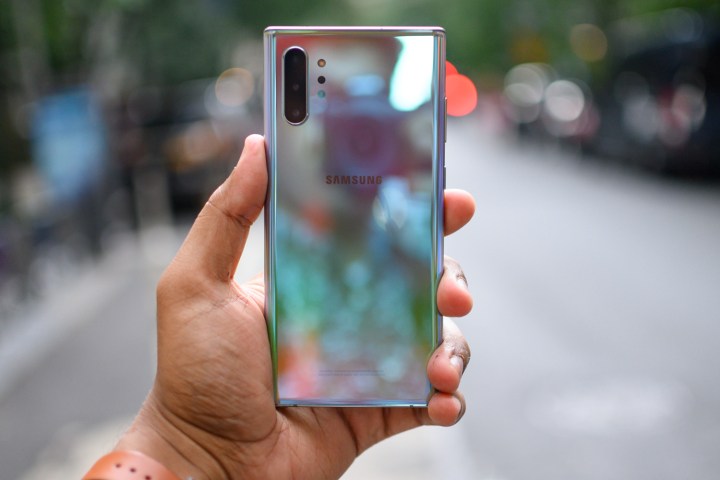As the purveyor of some of the world’s finest consumer electronics, Samsung has many flagship phones to choose from. If you’re shopping for one right now, then we’re sure the S20 line will have caught your eye, even if it’s no longer the latest generation. In particular, the middle child — the Galaxy S20 Plus — has a lot to offer. It boasts a jaw-dropping display with a 120Hz refresh rate, a highly versatile camera, 5G support as standard, and a very powerful processor.
It’s still a great phone, but the Galaxy Note 10 Plus is also another last-generation flagship that’s worth a serious look. The question is: Which one is better? We break down the differences for you here to help you pick the right phone for you.
Specs
| Galaxy S20 Plus | Galaxy Note 10 Plus | |
| Size | 161.9 × 73.7 × 7.8 mm (6.37 × 2.9 × 0.3 inches) | 162.3 × 77.2 × 7.9 mm (6.39 × 3.04 × 0.31 inches) |
| Weight | 186 grams (6.56 ounces) | 196 grams (6.91 oz) |
| Screen size | 6.7-inch Dynamic AMOLED | 6.8-inch Dynamic AMOLED |
| Screen resolution | 3200 × 1440 pixels (525 pixels per inch) | 3040 × 1440 pixels (498 pixels per inch) |
| Operating system | Android 11 | Android 11 |
| Storage | 128GB, 512GB | 256GB, 512GB |
| MicroSD card slot | Yes | Yes |
| Tap-to-pay services | Samsung Pay, Google Pay | Samsung Pay, Google Pay |
| Processor | Qualcomm Snapdragon 865 | Qualcomm Snapdragon 855 |
| RAM | 12GB | 12GB, 16GB |
| Camera | 12-megapixel, 64MP telephoto, 12MP ultrawide, and ToF sensor rear, 10MP front | 12MP, 12MP telephoto, 16MP ultrawide, and ToF sensor rear, 10MP front |
| Video | 8K at 30 fps, 4K at 60 frames per second, 1080p at 240 fps, 720p at 960 fps | 4K at 60 frames per second, 1080p at 240 fps, 720p at 960 fps |
| Bluetooth version | 5.0 | 5.0 |
| Ports | USB-C | USB-C |
| Fingerprint sensor | Yes, in-display | Yes, in-display |
| Water resistance | IP68 | IP68 |
| Battery | 4,500mAh
Fast charging (25W) Qi wireless charging |
4,300mAh
Fast charging (45W) Qi wireless charging |
| App marketplace | Google Play Store | Google Play Store |
| Network support | All major carriers | All major carriers |
| Colors | Cosmic Gray, Cloud Blue, Cosmic Black | Aura Glow, Aura White, Aura Black, Aura Blue |
| Prices | $1,200 | $1,100 |
| Buy from | Samsung, AT&T | Samsung |
| Review score | 4 out of 5 stars | 4.5 out of 5 stars |
Design, display, and durability
There are inevitably a lot of similarities between these Samsung siblings, but the S20 Plus is smaller, lighter, and has a more rounded design than the Note 10 Plus. Both have curved glass backs with camera suites at the top left, though the S20 Plus camera module is much bigger — more on the reasons for that later. The front of each phone is almost completely screen, with a hole punch front-facing camera top and center. Samsung has packed more into the svelte body of the S20 Plus, which is quite an achievement, but one area where the Note 10 Plus wins out is in the choice of color; we love that Aura Glow finish.
The screen in the Note 10 Plus is a fraction bigger and it’s certainly squarer, but the S20 Plus boasts a higher pixel density and, more importantly, supports a refresh rate of 120Hz. That’s double the refresh rate of the Note 10 Plus and it means that the S20 Plus feels silky smooth and incredibly responsive. It’s a feature in which gamers will be particularly interested.
Both phones have an IP68 rating, which means they can survive for up to 30 minutes submerged in fresh water without sustaining any damage. The glass designs make protective cases a sensible idea.
Winner: Samsung Galaxy S20 Plus
Performance, battery life, and charging
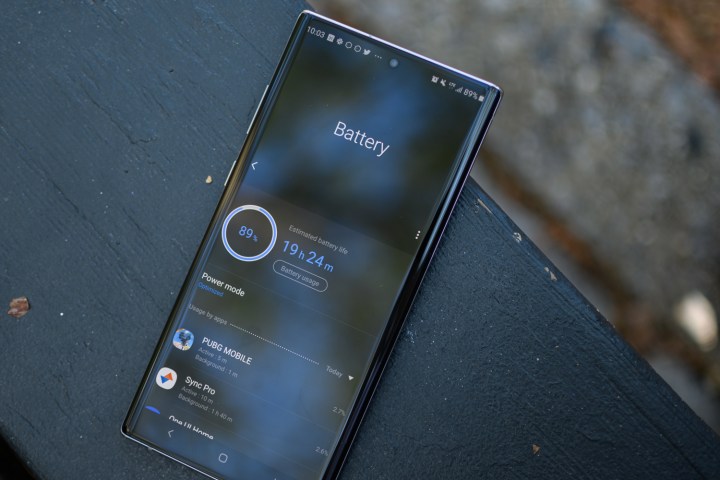
The Samsung Galaxy Note 10 Plus is a very powerful phone with a Qualcomm Snapdragon 855 processor, 12GB of RAM, and 256GB of storage in the base model — you can also opt for 16GB of RAM and 512GB of storage. However, the Galaxy S20 Plus boasts this year’s Snapdragon 865 chip, which offers somewhere around a 20% speed bump over its predecessor, and that’s combined with 12GB of RAM and a choice of 128GB or 512GB of storage. Both phones allow for expansion via MicroSD card.
Things are similarly tight in the battery department with a slightly bigger 4,500mAh battery in the S20 Plus versus a 4,300mAh battery in the Note 10 Plus. Both ship with 25W chargers, but you can buy a 45W charger for the Note 10 Plus to boost your wired charging speed slightly — we’re talking a few minutes. You’ll also find support for wireless charging and reverse wireless charging for topping up other devices in both of these phones.
Winner: Samsung Galaxy S20 Plus
Further reading
- How to use Samsung Pay
- Common Samsung Galaxy S20 problems and how to fix them
- How to sell your old Samsung Galaxy
Cameras
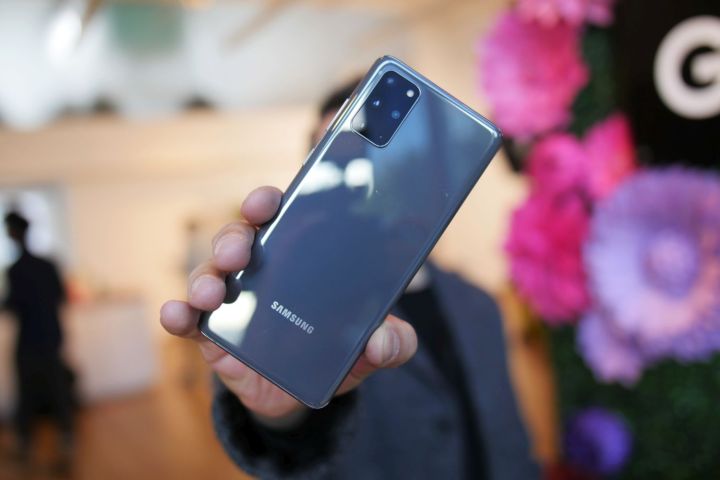
While the S20 Plus has won the last two categories, it has been by the slimmest of margins, but the gap widens here. Both have triple-lens cameras equipped with time-of-flight sensors to measure depth, but the S20 Plus has a far superior 64-megapixel telephoto lens that enables 3x optical zoom. The sensors in the S20 Plus camera are also larger to let in more light and it offers support for 8K video recording. You may feel that you don’t need 8K video yet, but it’s worth noting that the footage can be used to create high-resolution photos. The front-facing cameras are both rated at 10 megapixels.
Winner: Samsung Galaxy S20 Plus
Software and updates
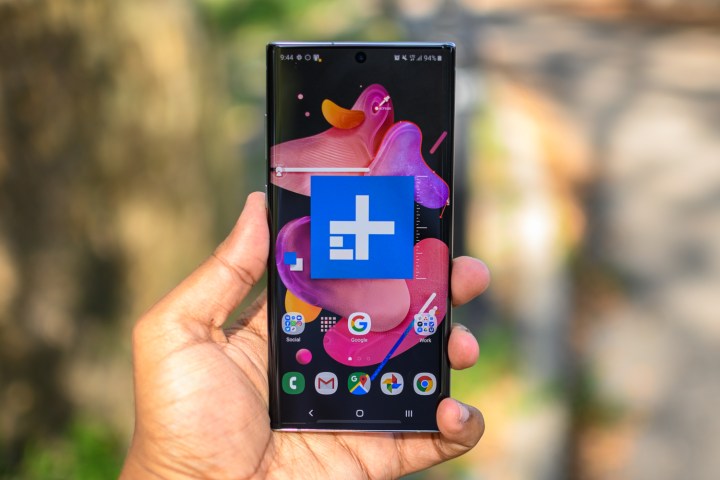
Both phones support Android 11 and Samsung’s slick One UI 3 sits on top. They’ll likely get future updates on a similar schedule, so there’s really no dividing line here.
Winner: Tie
Special features
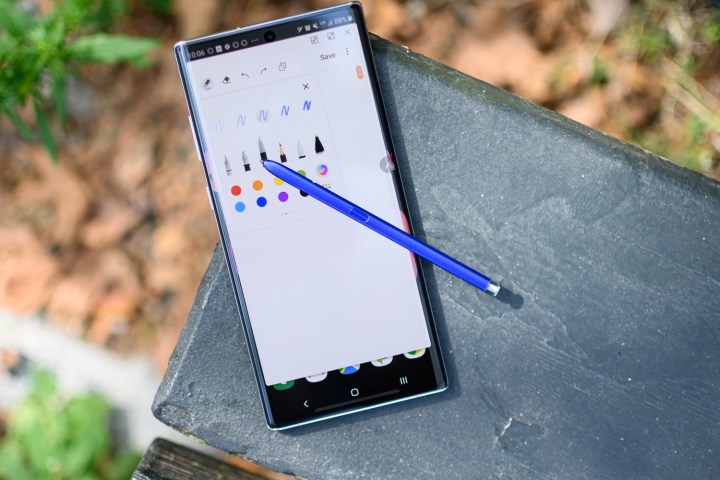
Only the Note 10 Plus comes with the S Pen which allows you to scribble notes or sketch and also doubles up as a remote control for things like snapping group photos with you in them. Features such as Samsung’s desktop DeX mode and Bixby assistant are common to both phones. The S20 Plus distinguishes itself with support for 5G networks and includes Sub-6 and mmWave connectivity. While it’s best to check with your carrier before deciding whether it’s worthwhile upgrading to 5G right now, as coverage is still very limited, the option of 5G connectivity could still be nice to have in the future, especially if you plan to stick with the phone for the next few years.
There is a 5G version of the Note 10 Plus, but it costs $200 more than the regular Note 10 Plus, so this cancels out the advantage of having S Pen support.
Winner: Tie
Price and availability
The Samsung Galaxy S20 Plus is now out of stock on Samsung’s own website, although you should still be able to find it on Amazon, Best Buy, and other retail websites. It officially starts from $1,200, but you’ll probably find it at a discount now the Galaxy S21 range is out.
The Samsung Galaxy Note 10 Plus starts from $1,100, though we’ve seen it on Samsung’s website for less than this. You should also be able to find it a bit cheaper online if you shop around, with Walmart currently listing it at $720 (while stocks last).
Overall winner: Samsung Galaxy S20 Plus
As usual, the newer phone wins out. The Samsung Galaxy S20 Plus has a more powerful processor, it has a better screen, a bigger battery, an improved camera, and 5G connectivity. On the other hand, these are all incremental improvements rather than major leaps and if you think you’ll use the S Pen and you’re not bothered about 5G yet, then the Note 10 Plus is an excellent phone that can be snapped up for a bit less.
Editors' Recommendations
- Best Samsung Galaxy S22 deals: Save big on unlocked models
- A surprise phone just beat the Galaxy S24 Ultra in a big way
- Have a Samsung Galaxy S23? Don’t update your phone to One UI 6.1
- Best Samsung Galaxy S24 deals: Save up to $800 on the phone
- Best Samsung Galaxy S23 Ultra deals: How to get the phone for free

